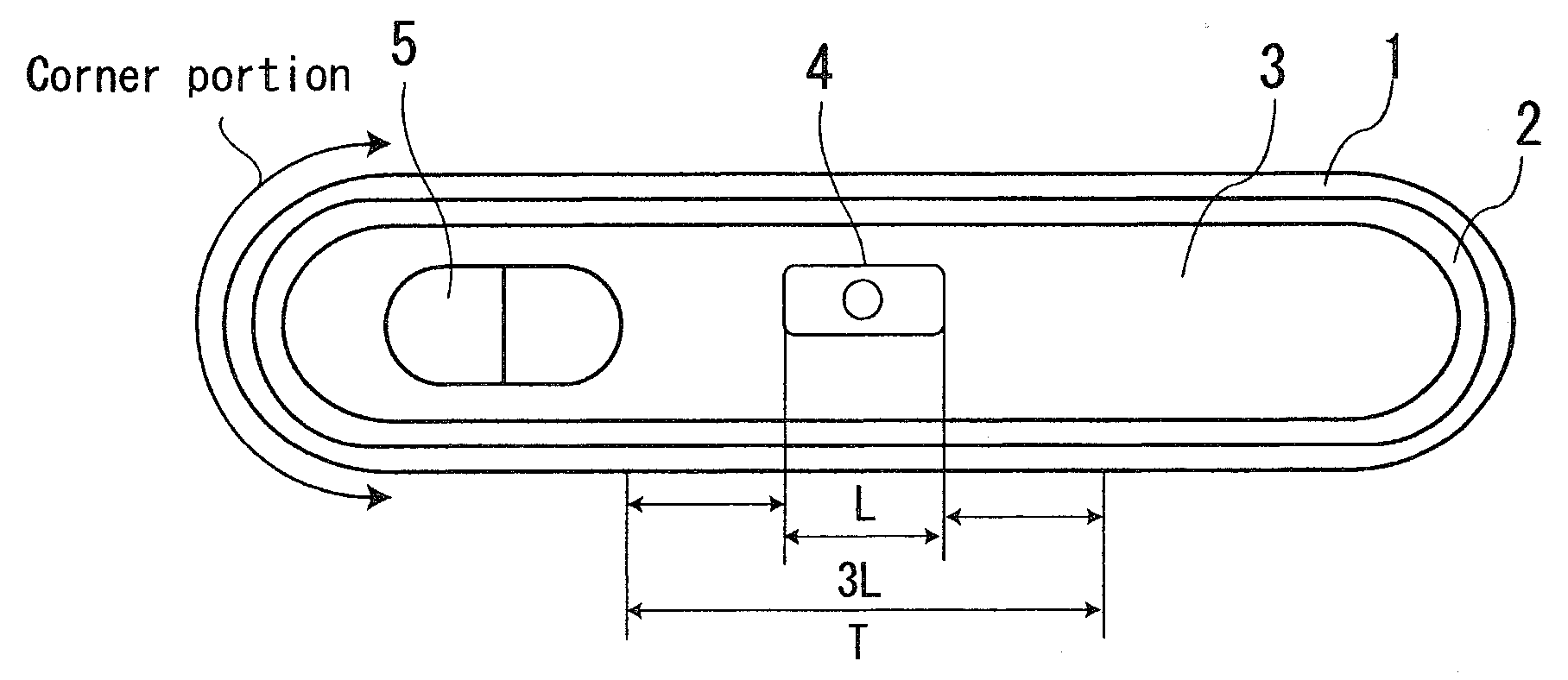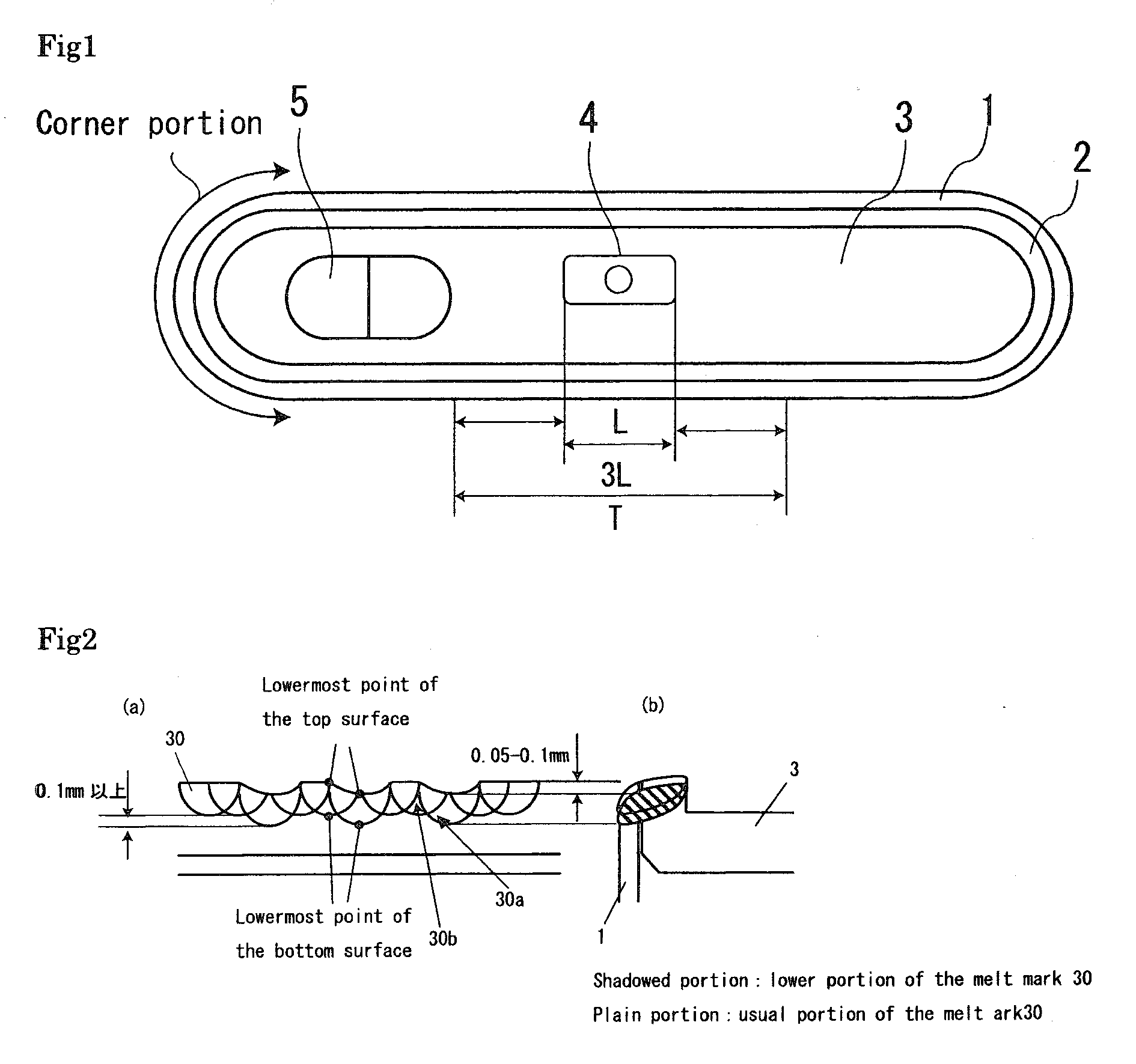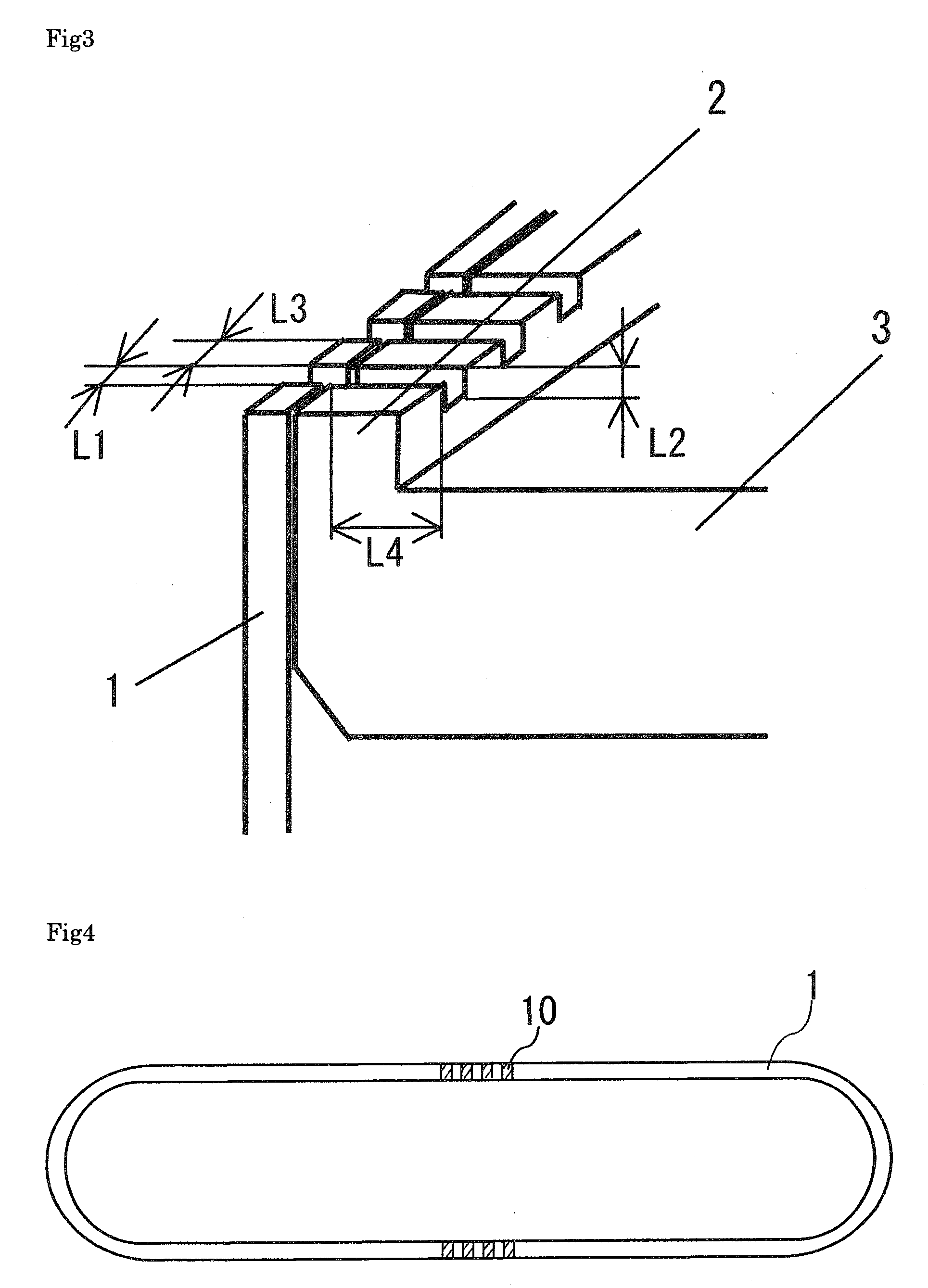Hermetic cell and method for producing same
a technology of hermetic cells and weld strength, which is applied in the direction of sustainable manufacturing/processing, envelope/bag making machinery, paper/cardboard containers, etc., can solve the problems of early degradation of laser equipment, adversely affecting the performance of degraded cells, and sputtering, so as to improve the weld strength and welding high strength, the effect of large thermal damage to the power generating elements
- Summary
- Abstract
- Description
- Claims
- Application Information
AI Technical Summary
Benefits of technology
Problems solved by technology
Method used
Image
Examples
experiment 1
Measurement of Strength of the Negative Electrode Terminal Against Lateral Pressing
[0043]As shown in FIG. 4, on the upper end of the opening of the can having a 10 mm terminal lateral portion T, dent portions 10 dented axially inwardly were formed. The width L1 of each of the dent portions 10 shown in FIG. 3 is 0.2 mm, the depth L2 is 0.1 mm, and the distance L3 between the dent portions 10 is 1.0 mm. The seal 3 was engaged with the can 1 having the dent portions 10 so that the periphery of the outer surface of the seal and the upper end of the opening of the can would be on the same plane. Then, the portion of engagement was welded with laser, thus preparing five dummy cells 1. While each of the dummy cells 1 housed an electrode assembly composed of the positive and negative electrodes and the separator, no electrolytic solution was contained in each cell. Also, no processing was made to the periphery portion (flange) 2 of the seal 3.
[0044]As shown in FIG. 5, on the periphery of th...
experiment 2
Measurement of Strength Against Pressing on the Corner Portion
[0050]As shown in FIG. 7(a), on the upper end of the opening of the can, dent portions dented axially inwardly were formed, and dent grooves were formed on the periphery of the outer surface of the seal. For each of the dent portions and the dent grooves, the width L1 shown in FIG. 3 is 0.2 mm, the depth L2 is 0.1 mm, and the distance L3 between the dent portions and between the dent grooves is 1.0 mm. The seal was engaged with the opening of the can so that the outer surface of the sealing plate and the upper end of the opening of the can would be on the same plane. Then, the portion of engagement was welded with laser, thus preparing three dummy cells 3 each having a thickness of 65 mm, a width of 34 mm, and a height of 50 mm. While each of the dummy cells 3 housed an electrode assembly composed of the positive and negative electrodes and the separator, no electrolytic solution was contained in each cell.
[0051]For compa...
experiment 3
Dropping Test
[0054]As shown in FIG. 8, over a 10 mm range of each of the terminal lateral portions, dent portions dented axially inwardly were formed on the upper end of the opening of the can, and dent grooves were formed on the periphery of the outer surface of the seal. For each of the dent portions and the dent grooves, the width L1 shown in FIG. 3 is 0.2 mm, the depth L2 is 0.1 mm, and the distance L3 between the dent portions and between the dent grooves is 1.0 mm. The seal was engaged with the opening of the can so that the outer surface of the sealing plate and the upper end of the opening of the can would be on the same plane. Then, the portion of engagement was welded with laser, thus preparing five dummy cells 4 each having a thickness of 55 mm, a width of 34 mm, and a height of 50 mm. While each of the dummy cells 4 housed an electrode assembly composed of the positive and negative electrodes and the separator, no electrolytic solution was contained in each cell.
[0055]Fo...
PUM
| Property | Measurement | Unit |
|---|---|---|
| widths L1 | aaaaa | aaaaa |
| depths L2 | aaaaa | aaaaa |
| distance L3 | aaaaa | aaaaa |
Abstract
Description
Claims
Application Information
 Login to View More
Login to View More - R&D
- Intellectual Property
- Life Sciences
- Materials
- Tech Scout
- Unparalleled Data Quality
- Higher Quality Content
- 60% Fewer Hallucinations
Browse by: Latest US Patents, China's latest patents, Technical Efficacy Thesaurus, Application Domain, Technology Topic, Popular Technical Reports.
© 2025 PatSnap. All rights reserved.Legal|Privacy policy|Modern Slavery Act Transparency Statement|Sitemap|About US| Contact US: help@patsnap.com



